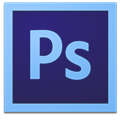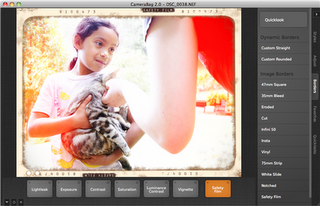
Preview based on a production Nikon D3200
Nikon has updated its entry-level DSLR offering with the addition of a 24MP CMOS sensor. This makes it equal to Sony's A65, A77 and NEX-7 in offering the highest pixel count we've yet seen at the APS-C sensor size, and second only to the full-frame professional-grade D800 in Nikon's entire range. The significant thing, though, is that it does so at a starting price of $699 (the same launch price as the D3100 and Panasonic DMC G3, for comparison). It may not be revolutionary, but it promises a lot of camera for a competitive amount of money.
Pixel-count aside, the changes from the D3100 are subtle but, with 1080p30 video, a 920k dot LCD and the option to add an affordable Wi-Fi transmitter, there are clear benefits over the D3100's pretty capable specification. As usual for Nikons at this level, the D3200 doesn't feature a built-in focus motor, doesn't offer auto exposure bracketing and has simplified Active D-Lighting options but beyond these, there's little missing that you could reasonably expect for this class of camera. It even regains the option to trigger the camera with an infrared remote - with the inclusion of sensors on the front and rear of the camera.
The inexorable rise of the mirrorless camera has undoubtedly put particular pressure on the entry-level end of the large sensor market. The smaller body sizes of mirrorless cameras, combined with their more compact-camera-like operation has helped win-over some people who would otherwise have bought a DSLR, as well as drawing people away from high-end compacts. However, entry-level DSLRs still offer a very attractive and polished photographic tool - and with continuous autofocus behavior that no mirrorless camera has come close to matching (aside from Nikon's own 1 V1 and 1 J1, which feature smaller 'CX' sensors). With this in mind, it's understandable Nikon would wheel-out a camera with a big headline specification to look impressive on the shop shelf.
Although its upgrades aren't necessarily the product of great leaps of ingenuity, the D3200 is a continuation of a carefully evolved - and tailored to suit its market - line of cameras, that offers tremendous capability with well thought-out ease-of-use. If the image quality comes anywhere near that of the 24MP Sonys, the D3200 is going to be a tough camera to compete with.
The only thing that seems odd on the D3200 is the lack of image processing filters at the point of capture. Since Olympus introduced its Art Filters to the E-30 back in 2008, processing filters have become increasingly common on most cameras. And, while they're not an essential feature by any means, they're nice to have, especially in a camera at this level. Given that Nikon's P7100 offers a selection of special processing effects, it's a little odd not to see them here. There's an option to re-process JPEGs, though - with examples in our preview samples gallery.
Nikon D3200 specification highlights
24MP CMOS sensor
ISO 100-6400 (plus ISO 12,800-equivalent Hi1 setting)
Expeed 3 processing
3.0", 920k dot screen
Full HD 1080p30 video (with 25p and 24p options)
Microphone socket
Twin IR remote receivers
4 frame-per-second continuous shooting
Guide mode
Compared to its peers:
Side-by-side against the Panasonic G3, it's immediately apparent the size trade-off you make to retain an optical viewfinder. In this comparison the mirrorless Panasonic has a slightly smaller sensor, but Sony's NEX and Samsung's NX models aren't much larger than the G3 while boasting APS-C sensors.
The D3200 is very similar in size to Canon's Rebel T3/EOS 1100D, with which it nominally competes. The T3, while a very likeable camera, looks very off-the-pace with its 12MP sensor, 720P movies and 230k dot screen.
Wi-Fi option (WU-1a)
Alongside the D3200, Nikon announced an optional Wi-Fi transmitter for the camera. The WU-1a clips into the USB socket of the D3200 and allows you to broadcast its images to smartphones and tablets running a Nikon app. The unit allows the camera's live view output to be streamed to the smart device and allows images to be shot remotely (at a distance of up to 49ft, but with no control over the camera's settings).
Initially an app will be available for Android phones and tablets, with an iOS version expected in fall/autumn 2012. We're told the app will allow either full-size or VGA-resolution images to be transferred from the camera, but we have yet to see how long it would take to grab a 24MP image. We would also like to see how securely the unit attaches to the camera, given that it sticks out of the side, and looks like it might be a little easy to dislodge. It also requires the port cover that reaches all the way up the camera's flank to be left hanging open all of the time that it's in use.
If you're new to digital photography you may wish to read the Digital Photography Glossary before diving into this article (it may help you understand some of the terms used).
Conclusion / Recommendation / Ratings are based on the opinion of the reviewer, you should read the ENTIRE review before coming to your own conclusions.
Images which can be viewed at a larger size have a small magnifying glass icon in the bottom right corner of the image, clicking on the image will display a larger (typically VGA) image in a new window.
To navigate the review simply use the next / previous page buttons, to jump to a particular section either pick the section from the drop down or select it from the navigation bar at the top.
DPReview calibrate their monitors using Color Vision OptiCal at the (fairly well accepted) PC normal gamma 2.2, this means that on our monitors we can make out the difference between all of the (computer generated) grayscale blocks below. We recommend to make the most of this review you should be able to see the difference (at least) between X,Y and Z and ideally A,B and C.
This article is Copyright 2011 and may NOT in part or in whole be reproduced in any electronic or printed medium without prior permission from the author.
Buy the Nikon D3200 from Amazon
Nikon D3200 24.2 MP CMOS Digital SLR
with 18-55mm f/3.5-5.6 AF-S DX VR NIKKOR Zoom Lens (Black)
$699.00
Nikon D3200 24.2 MP CMOS Digital SLR
with 18-55mm f/3.5-5.6 AF-S DX VR NIKKOR Zoom Lens (Red)
$699.00
Nikon D5100 16.2MP CMOS Digital SLR Camera
with 18-55mm f/3.5-5.6 AF-S DX VR Nikkor Zoom Lens
$646.95
Nikon D3100 14.2MP Digital SLR Camera
with 18-55mm f/3.5-5.6 AF-S DX VR Nikkor Zoom Lens
$546.95
Nikon D90 12.3MP DX-Format CMOS Digital SLR Camera
with 3.0-Inch LCD (Body Only)
Too low to display
Click here to view all listings
Get more prices from Amazon
Support this site, buy the Nikon D3200 from affiliate retailers
Abe's of Maine
Nikon D3200 Red Digital SLR Camera
$699.95
Unique Photo
Nikon D3200 Red Digital SLR Camera
$699.00
Abe's of Maine
Nikon D3200 Black SLR Digital Camera Kit
w/ 18-55 mm Lens
$699.95
Samy's Camera Inc
Nikon D3200 Black SLR Digital Camera Kit
w/ 18-55 mm Lens
$699.95
BestPricePhoto.com
Nikon D3200 Black SLR Digital Camera Kit
w/ 18-55 mm Lens
$799.00
Unique Photo
Nikon D3200 Black SLR Digital Camera Kit
w/ 18-55 mm Lens
$699.00






































